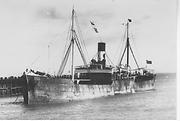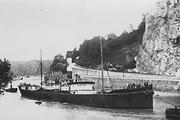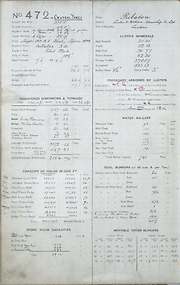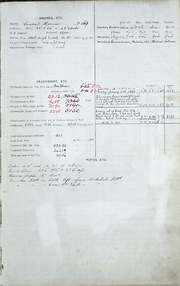 Hartlepool Sports & Leisure
Hartlepool Sports & Leisure
- Cinemas, Theatres & Dance Halls
- Musicians & Bands
- At the Seaside
- Parks & Gardens
- Caravans & Camping
- Sport
 Hartlepool Transport
Hartlepool Transport
- Airfields & Aircraft
- Railways
- Buses & Commercial Vehicles
- Cars & Motorbikes
- The Ferry
- Horse drawn vehicles
 A Potted History Of Hartlepool
A Potted History Of Hartlepool
- Unidentified images
- Sources of information
- Archaeology & Ancient History
- Local Government
- Printed Notices & Papers
- Aerial Photographs
- Events, Visitors & VIPs
 Hartlepool Trade & Industry
Hartlepool Trade & Industry
- Trade Fairs
- Local businesses
- Iron & Steel
- Shops & Shopping
- Fishing industry
- Farming & Rural Landscape
- Pubs, Clubs & Hotels
 Hartlepool Health & Education
Hartlepool Health & Education
- Schools & Colleges
- Hospitals & Workhouses
- Public Health & Utilities
- Ambulance Service
- Police Services
- Fire Services
 Hartlepool People
Hartlepool People
 Hartlepool Places
Hartlepool Places
 Hartlepool at War
Hartlepool at War
 Hartlepool Ships & Shipping
Hartlepool Ships & Shipping

Ribston Gallery
Gallery images
Related items :
 Hartlepool Crew Losses - First World War
Hartlepool Crew Losses - First World War
In this section you will find information, photographs and stories relating to more than 260 Hartlepool seamen who lost their lives during during the First World War, and of the ships they served on.
To find a particular crewman, simply type his Surname in the Search Box at the top of the page.
 Hartlepool Ship Losses - First World War
Hartlepool Ship Losses - First World War
This section will, in time, contain the stories of more than 450 merchant ships built or owned in the Hartlepools, and which were lost during the First World War. As an illustration of the truly global nature of shipbuilding, these ships were owned by companies from 22 different countries, including more than 30 sailing under the German flag at the outbreak of war.
 Of Ships and Men - Horsa, Ribston, Waverley - the Story
Of Ships and Men - Horsa, Ribston, Waverley - the Story
The following information has been compiled by “Heroism & Heartbreak” Project Volunteers from a wide range of sources, including Lloyd’s Registers, the Miramar Ship Index (http://www.miramarshipindex.org.nz/), U-boat.net (http://www.uboat.net/), and the Commonwealth War Graves Commission’s Tower Hill Memorial records (http://www.cwgc.org/). If you have any further information about these ships or their crews and would like to share it with us, then please contact us at infodesk@hartlepool.gov.uk
Of Ships and Men – Horsa, Ribston, Waverley
On April the 30th, 1917, the Hartlepool steamship Horsa was torpedoed and sunk without warning by the German submarine U-93, some 200 miles off the south-west coast of Britain. This 3,000 ton steamer had been built at the William Gray shipyard in 1894 and was owned locally by Herskind & Company of West Hartlepool. At the time of her sinking she was sailing from Briera in Algeria, bound for Cardiff with a cargo of iron ore.
The attack on the ship was recorded by one of the U-boat’s crew:
“We had one torpedo left, and were nearly ready to turn homeward. It was sundown of a clear, balmy spring day. A big steamer came along, the British ship HORSA. With our last torpedo we scored a clean hit at the bow. She sank very quickly. Her stern rose into the air and she went down like an airplane in a nose dive.”
Eleven lives were lost, including two from the town: 54-year old Chief Engineer Alfred Nash, son of the late George Henry and Elizabeth Nash; husband of Mary Jane Nash (formerly Morrod), at No.7, Carlton Street, West Hartlepool; and sailor Charles Rushton, about whom there are few details other than he was born in Hartlepool.
The other crewmen who lost their lives were:
William Brodie, Leading Seaman (Royal Naval Reserve), aged 21, Avoch, Ross-shire;
James Casey, Chief Boatswain, 50, Church Bay Rd. Crosshaven;
James Casey, 3rd Engineer, 20, b. Crosshaven;
Arthur Elliott, Fireman, 30, Cardiff;
Walter Farrant, Engineer’s Steward, 17, Sydenham St, Barry Dock, Glamorgan;
J. Josephson, Donkeyman, 21, b. Russia;
Edward Knaggs Stonehouse, Master, 65, Whitby, Yorkshire;
M. Soares, Sailor, 39, b. Puerto Rico;
Peter John Tibbo, Sailor, 19, b. Harbour Breton, Newfoundland.
The survivors from the Horsa were taken aboard the submarine and transferred the next day to the lifeboats of a Swedish ship which had been captured and sunk by another U-boat, the U-21.
An even greater loss of life occurred when the steamship Ribston was torpedoed and sunk 90 miles off the south-west coast of Britain by U-45, on July the 16th, 1917. Like the Horsa, the Ribston was also built in 1894 at the William Gray shipyard, but for different owners, the London & Newcastle Steam Ship Company Ltd. By 1917 she had been sold to the Zodiac Shipping Company and was on a voyage from Melila in Spain, bound for Glasgow with a cargo of iron ore when she was sunk.
Twenty-five crewmen were lost, including the 1st Mate, Thomas Glennie, who lived with his wife Sarah Jane at No.14 Cundall Road, West Hartlepool.
The other crewmen who lost their lives were:
William Henry Atkinson, Messman, 28, b. Stockton-on-Tees, resided Hexthorpe, Doncaster;
William Jenkin Bartlett, Able Seaman, 20, Barry Island, Glamorgan;
Robert Burrows, Steward, 24, b. Birmingham, resided Cardiff;
B. Calson, Donkeyman, 49, b. London;
Zanis Constantine Coutsouis, Carpenter, 58, b. Chile, resided Teavis St., Barry;
Charles Crowden, Sailor, 23, b. Penarth;
George Mansel Durbin, Sailor, 18, Barry Dock, Glamorgan;
Benjamin Charles Evans, Fireman, 23, Merthyr St. Barry, Glamorgan;
William Hunter Jamieson, Able Seaman, 29, Shetland;
Joseph Kays, Fireman, 32, b. Bedminster, Bristol;
Francis Kemp, Able Seaman, 28, b. Wolverhampton;
James MacPherson, Leading Deckhand, 23, Kinlochberry, Lairg;
David Paterson MacRae, 1st Engineer, 50, b. Edinburgh, resided Newport, Monmouthshire;
George Madden, 2nd Mate, 22, b. Liverpool;
John Stewart, 3rd Engineer, 30, b. Corriecravie, Isle of Arran;
James Tatton, Deckhand;
George Henry Taylor, Able Seaman, 21, Barry, Glamorgan;
William Thomas, Fireman, 26, Cardiff;
J. Tweedie, Master;
John Owen Charles Vincent, Fireman, 28, b. Cardiff;
John Henry White, 2nd Engineer, 27, b. Liverpool, resided British Columbia, Canada;
Charles Stanley Wilson, Fireman, 24, Cardiff.
On December the 20th, 1917, the 4,000 ton steamship Waverley was torpedoed and sunk off the Algerian coast by the German submarine U-35. Owned by the local Pyman Steam Ship Company, she was on a voyage from Cardiff to Port Said with a cargo of coal, iron and railway wagons. She went down with the loss 22 crewmen, including 34-year old Chief Engineer George Herbert Todd, who lived with his wife Ada Isabel at No.44 Milton Street, West Hartlepool.
The other crewmen who lost their lives were:
Andrew Coleman, Fireman/Trimmer, 32, b. Cork;
William Devany, Cabin Boy, 17, b. Glasgow;
Daniel Patrick Gilmore, 2nd Engineer, 43, b. Belfast;
Ernest Green, Mess Room Steward, 16, Great Yarmouth;
Theophilus Hopkins, Fireman/Trimmer, 36, b. Newport;
Francis Kelly, Leading Seaman (Royal Naval Reserve);
M. Kinwigi, Fireman/Trimmer, 20, b. Finland;
Alfred Francis Lee, Chief Steward, 29, b. Liverpool;
Louis Mallia, Boatswain, 42, b. Malta, resided Constantinople;
William Nash, Fireman/Trimmer, 29, b. Newport;
Peter O’Donnell, Carpenter, 65, b. Cloghernamore, Co. Donegal;
P. Petas, Fireman/Trimmer, 23, b. Greece;
Joseph Charles Edward Racine, Ship’s Cook, 25, b. St Jean, Canada;
O.W. Raisanen, Fireman/Trimmer, 34, b. Finland;
George Allan Richmond, Galley Boy, 15, b. Wishart;
Guiseppe Said, Able Seaman, 45, Tarxien, Malta;
Cyril David Slater, Apprentice, 19, b. Newark;
William Smith, Donkeyman, 31, b. Birmingham;
C. Traynor, Fireman/Trimmer, 29, b. Belfast;
Laurence Sidney Webster, Wireless Operator, 17, b. Tottenham;
Alfred Clark White, 4th Engineer, 24, Mount Florida, Glasgow.
 Of Ships and men - Horsa, Ribston, Waverley - the Photographs
Of Ships and men - Horsa, Ribston, Waverley - the Photographs
The photographs in this Gallery feature in the “Heroism & Heartbreak” talking history ‘Of Ships and Men – Horsa, Ribston, Waverley’. They have been kindly shared with this project by Mr. Harold Appleyard and Mr. Martin Spaldin. If you have any further information about these ships or their crews and would like to share it with us, then please contact us at infodesk@hartlepool.gov.uk
More detail » Pyman S.S. Co. Ltd.
Pyman S.S. Co. Ltd.
George Pyman was born in May 1822 in Sandsend, North Yorkshire. He went to sea as an apprentice and by 1843 he was Master of the vessel Nameless.
He married Elizabeth English in 1843 and they had two daughters and seven sons.
In 1850 he left the sea and the family settled in West Hartlepool where he went into partnership with his brother-in-law Francis English, as grocers and ship chandlers. In about 1854 he changed direction and went into partnership with Thomas Scurr as shipbrokers for the local collieries. They owned shares in a number of sailing vessels. Other shareholders included Francis English, John Smurthwaite, Thomas Wood & Ralph Ward Jackson.
Thomas Scurr died in 1861 and George then formed his own company as George Pyman & Co. In 1865 he purchased his first steamship, the George Pyman, and gradually shares in the brigs were sold off. Eventually the company became the largest owners of steamships in the north of the U.K.
In 1873 Thomas Bell of Newcastle joined as a partner in the firm. From 1879 the company opened branches in Hull, Grimsby, Immingham and Glasgow. When George retired in 1882 the Bell family took over the running of the company.
Pyman, Watson & Co. was set up in Cardiff in 1874 by John, one of George’s sons along with Thomas Edward Watson and Francis and Frederick, another two of his sons, set up Pyman Bros. in London in 1903. Some of these companies ships were registered in West Hartlepool.
George was elected a Poor Law Guardian in 1861, an Improvement Commissioner in 1868, and was sitting on the Durham County Bench from 1872. In 1879 he was appointed Vice Consul for Belgium and in 1888 was elected the second Mayor of West Hartlepool. In 1895 he received the honour of being made a Freeman of the Borough. George died in November 1900 at his home, Raithwaite Hall.
There is a wealth of further information in Peter Hogg’s book ‘The Pyman Story’.
More detail » Ribston
Ribston
 Donated by Mr. Bert Spaldin
Donated by Mr. Bert SpaldinThe steamship Ribston, having run ashore at an un-named location.
More detail »








